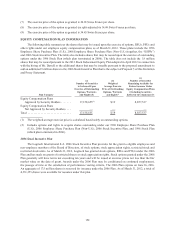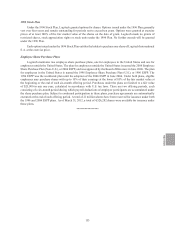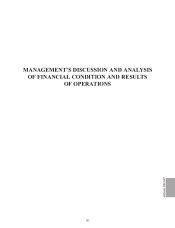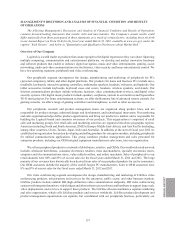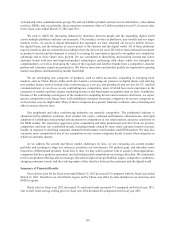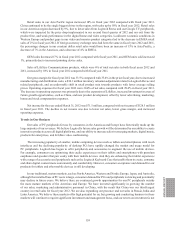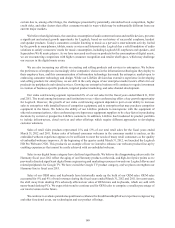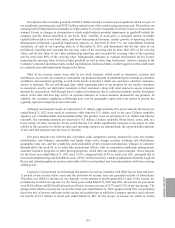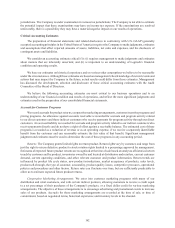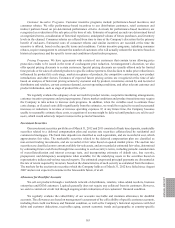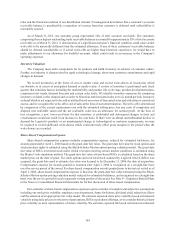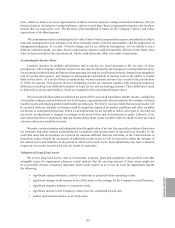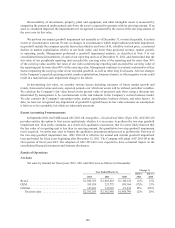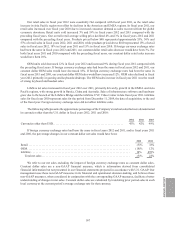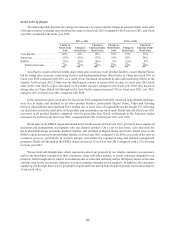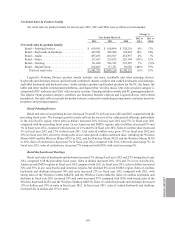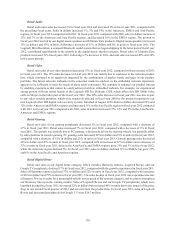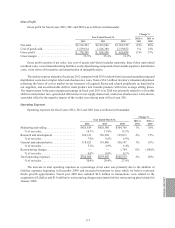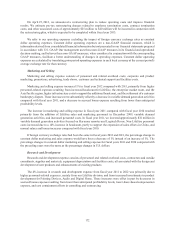Logitech 2012 Annual Report Download - page 172
Download and view the complete annual report
Please find page 172 of the 2012 Logitech annual report below. You can navigate through the pages in the report by either clicking on the pages listed below, or by using the keyword search tool below to find specific information within the annual report.jurisdictions. The Company is under examination in various tax jurisdictions. The Company is not able to estimate
the potential impact that these examinations may have on income tax expense. If the examinations are resolved
unfavorably, there is a possibility they may have a material negative impact on our results of operations.
Critical Accounting Estimates
The preparation of financial statements and related disclosures in conformity with U.S. GAAP (generally
accepted accounting principles in the United States of America) requires the Company to make judgments, estimates
and assumptions that affect reported amounts of assets, liabilities, net sales and expenses, and the disclosure of
contingent assets and liabilities.
We consider an accounting estimate critical if it: (i) requires management to make judgments and estimates
about matters that are inherently uncertain; and (ii) is important to an understanding of Logitech’s financial
condition and operating results.
We base our estimates on historical experience and on various other assumptions we believe to be reasonable
under the circumstances. Although these estimates are based on management’s best knowledge of current events and
actions that may impact the Company in the future, actual results could differ from those estimates. Management
has discussed the development, selection and disclosure of these critical accounting estimates with the Audit
Committee of the Board of Directors.
We believe the following accounting estimates are most critical to our business operations and to an
understanding of our financial condition and results of operations, and reflect the more significant judgments and
estimates used in the preparation of our consolidated financial statements.
Accruals for Customer Programs
We record accruals for product returns, cooperative marketing arrangements, customer incentive programs and
pricing programs. An allowance against accounts receivable is recorded for accruals and program activity related
to our direct customers and those indirect customers who receive payments for program activity through our direct
customers. An accrued liability is recorded for accruals and program activity related to our indirect customers who
receive payments directly and do not have a right of offset against a receivable balance. The estimated cost of these
programs is recorded as a reduction of revenue or as an operating expense, if we receive a separately identifiable
benefit from the customer and can reasonably estimate the fair value of that benefit. Significant management
judgment and estimates must be used to determine the cost of these programs in any accounting period.
Returns. The Company grants limited rights to return product. Return rights vary by customer, and range from
just the right to return defective product to stock rotation rights limited to a percentage approved by management.
Estimates of expected future product returns are recognized at the time of sale based on analyses of historical return
trends by customer and by product, inventories owned by and located at distributors and retailers, current customer
demand, current operating conditions, and other relevant customer and product information. Return trends are
influenced by product life cycle status, new product introductions, market acceptance of products, sales levels,
product sell-through, the type of customer, seasonality, product quality issues, competitive pressures, operational
policies and procedures and other factors. Return rates can fluctuate over time, but are sufficiently predictable to
allow us to estimate expected future product returns.
Cooperative Marketing Arrangements. We enter into customer marketing programs with many of our
distribution and retail customers, and with certain indirect partners, allowing customers to receive a credit equal
to a set percentage of their purchases of the Company’s products, or a fixed dollar credit for various marketing
arrangements. The objective of these arrangements is to encourage advertising and promotional events to increase
sales of our products. Accruals for these marketing arrangements are recorded at the time of sale, or time of
commitment, based on negotiated terms, historical experience and inventory levels in the channel.
162


